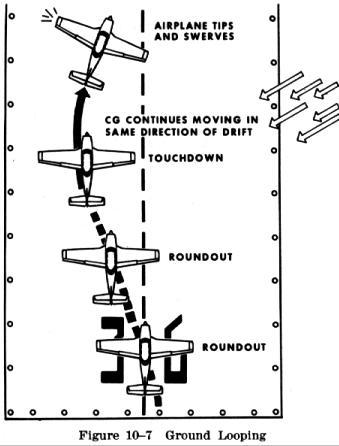Airplanes having a nosewheel are somewhat less prone to ground loop. Since the center of gravity is located forward of the main landing gear on these airplanes, any time a swerve develops, centrifugal force acting on the center of gravity will tend to stop the swerving action.
If the airplane touches down while drifting or in a crab, the pilot should apply aileron toward the high wing and stop the swerve with the rudder. Brakes should be used to correct for turns or swerves only when the rudder is inadequate. The pilot must exercise caution when applying corrective brake action because it is very easy to over control and aggravate the situation.
If brakes are used, sufficient brake should be applied on the low wing wheel (outside of the turn) to stop the swerve. When the wings are approximately level, the new direction must be maintained until the airplane has slowed to taxi speed or has stopped.
